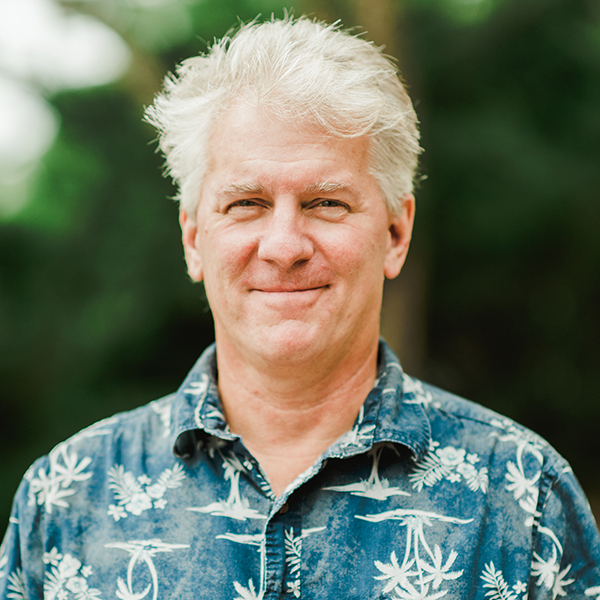Get In Touch
Mercy Hall 130 | 207-893-7949 | sjury@sjcme.edu
Teaches Biology and Environmental courses including Concepts in Biology, Introduction to Biology, Physiology, Ecology and the Environmental Challenge, and Seminar and Research Thesis.
Scholarly interests - invertebrate and fish physiology and behavior, fisheries, and aquaculture.
Steven Jury is a broadly trained animal physiologist interested in the physiology, behavior, and ecology of aquatic and marine invertebrates and fish. Specific interests include sensory physiology, physiological ecology, and aquaculture technology development. He has served as a senior research scientist and consultant for Aquaculture Associates and previously taught at both the University of New England and the State University of New York. Professor Jury is also on the marine science advisory boards for the Maine Technology Institute and Southern Maine Community College. In his free time, Professor Jury enjoys playing soccer and taking his dog on hiking excursions.
Publications
Clark, A.S., S.H. Jury, J.S. Goldstein, T.G. Langley, K. Jenke and W.H. Watson. 2018. Underwater video surveillance, a means to understanding lobster trap saturation. Fishery Bulletin 116:161-170
Jury, S.H., T. Langley, B.C. Gutzler, J.S. Goldstein, W.H. Watson. 2018. Monitoring the behavior of freely moving lobsters with accelerometers. Bulletin of Marine Science 94(3):533-553.
Clark, A. S, S. Jury, J. S. Goldstein, T.G. Langley, C.R. Chambers, and W.H. Watson. 2015. A comparison of American lobster size structure and abundance using standard and ventless traps. Fisheries Research 167:243-251.
Jury, S. and W. Watson 2013. Seasonal and sexual variation in the thermal preferences of estuarine lobsters (Homarus americanus). Can. J. Fish Aquat. Sci. 70(11):1650-1657.
Watson W. and S. Jury 2013. The relationship between American lobster catch per unit effort, entry rate into traps and density. Marine Biology Research 9:59-68.
Saunders, K.M., H.J. Brockmann, W.Watson, S. Jury 2010. Multiple sensory cues are used to locate mates in horseshoe crabs (Limulus polyphemus). Current Zoology 56(5):485-498.
Watson, W.H., W. Golet, D. Scopel, and S. Jury. 2009. The use of ultrasonic telemetry to determine the distance of attraction to bait and area fished by a trap. NZ Journal of Marine and Freshwater Res. 43:411-418.
Childress, M. and S. Jury. 2006. Ch. 3. Behaviour In: Phillips, B. (ed) Lobsters: Biology, Management, Aquaculture and Fisheries. Academic Press pp 78-112.
Jury, S., C. Chabot, and W. Watson 2005. Daily and circadian rhythms of locomotor activity in the American lobster, Homarus americanus. J. Exp. Mar. Biol. Ecol. 318:61-70.
Jury, S. H. Howell, D. O'Grady, D. Kooritis and W. Watson 2001. Lobster trap video: field observations of the behavioral responses of Homarus americanus to traps Mar. Freshwater Res. 52:1125-32.
O‚Grady, D., S. Jury and W. Watson. 2001. The use of a treadmill to study the relationship between locomotion, ventilation and heart rate in the lobster, Homarus americanus. Mar. Freshwater Res. 52:1387-1394.
Dufort, C. G., S.H. Jury, J.M. Newcomb, D.F. O’Grady, and W. Watson 2001. Detection of salinity by the lobster, Homarus americanus. Biol. Bull. 201:424-434.
Jury, S.H. and W. Watson. 2000. Thermosensitivity of the lobster, Homarus americanus as determined by cardiac assay. Biol. Bull. 199(3): 257-264.
Awards
One of two faculty awarded a one-year research grant for $20,000 from National Aeronautics and Space Administration (NASA) to introduce satellite science and build nanosatellite prototypes in introductory calculus-based physics labs. This funding led to the creation of a nanosatellite research team that involves SJC students and faculty, as well as high schools. Their goal is to design a data communications nanosatellite, and to help Maine launch its first Cube Satellite. Dr. Dorland said, “We are one of the first colleges in the state working on this; we’re on the ground floor with NASA.” Kevin McWilliams ’20 also participates in this program as a researcher. Community partners include: Maine Space Grant Consortium, Wells National Estuarine Research Reserve, and Yarmouth High School. (2018)
National Science Foundation Grant - a $647,000 grant to fund scholarships and innovative science education programming for Saint Joseph’s College Science Scholars Program. (2017)
The Maine Outdoor Heritage Fund Grant - a $15,000 grant to develop strategies to enhance sea-run brown trout stock in the Mousam River in collaboration with the Maine Department of Inland Fisheries & Wildlife and Wells National Estuarine Research Reserve. (2017)
NASA’s Maine Space Grant Consortium Grant - a $25,000 seed grant to Dr. Jason Goldstein of the Wells National Estuarine Research Reserve to work with the team of Steven Jury, Ryan Dorland, and Sciences students to create faculty-mentored student research experiences that develop a sensor-based platform for evaluating climate change in estuarine and coastal ecosystem. (2017)
